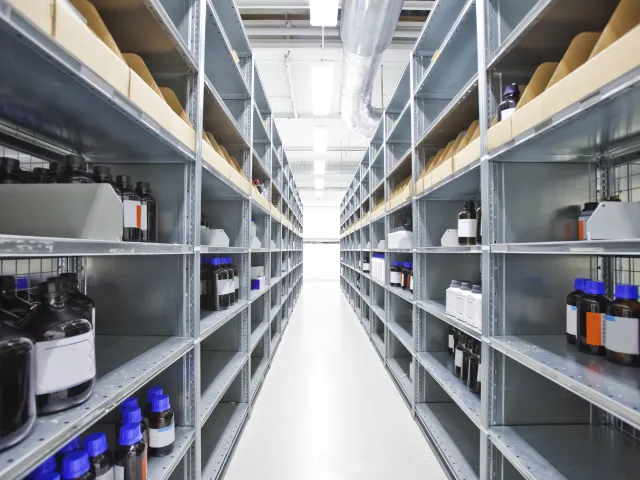Table of contents
How often can you glean serialization insights from pharma companies, the world’s largest CMO, and one of the big 3 wholesale distributors all in one place? If your company is in the early stages of planning or still assessing DSCSA requirements, read the key insights and action items of these industry leaders - in their own words - as collected at TraceLink’s spring series of DSCSA serialization workshops.
Serialization is Complicated, and Its Impact Is Far-Reaching
1: “When I started with this, I naively thought we would just put serial numbers on packaging and be done with it. Once you start digging in, you realize how complex of an integration it truly is.”
2: “One of the most important things you can do is to establish that this is a huge project. It impacts every single area in your company. Establish the support in all your functional areas, but also identify a project lead.”
3: “The track and trace project touches every functional area of our company, including finance; business management; marketing; contracts and purchasing; IT; quality and computer systems integration; product management; engineering; legal; regulatory; supply chain; and sales. If we don’t engage with the right groups, we suffer because not everyone is on the same page or doing the right thing at the right time.”
4: “Across our different locations, we have a couple of hundred people touching our serialization efforts to assist partners, execute, monitor regulatory issues, and more. It’s a very far-ranging effort for us as a company.”
5: “Serialization is a beast that really impacts a lot of different operations within a manufacturing plant, and downstream as well.”
Data Exchange Requirements – Regulatory & Trade – Introduce Huge Complexity
6: “When you are in the serialization world, it’s not just the physical movement of product, but it is the data – the serialized information – that needs to be passed along with the product that is going to make it successful.”
7: “In 2017, manufacturers are required to pass T3 data downstream electronically. How will you do that, particularly if you have wholesaler or pharmacy partners who will not be ready to receive it electronically? For us, the portal access that TraceLink provides for our downstream partners will be key.”
8: “We have a challenge with master data that is predominant across the industry. We don’t technically have a single source of truth but pockets of master data – whether it’s product, customer, or location– within various ERP systems. It becomes a challenge from a serialization perspective to collect this information, make sure it’s business ready, scrub it, cleanse it, and make it operational.”
9: “I look at master data as your static data: NDCs, GTINs, quantities, site locations, etc. Under compliance requirements, how will you communicate important changes in your master data to your downstream trading partners?”
10: “Some of the things we’re thinking about as we hit 2017 are how are we going to manage the 24 hour turnaround time for a request for verification, especially when most of our CMOs are located in other countries, in very different time zones.”
11: “Exceptions handling is another critical area. When we pass along serialized data, how are we going to handle exceptions? When a return comes; when we have to do a rework; when we have a recall – how do you handle all of those exceptions in a serialized world?”
12: “Aggregation is such a key issue because of the requirement coming in 2019 for wholesalers around saleable returns and verifying the standardized numerical identifier. They can’t do that unless they have access in some way to the manufacturer’s data. But the manufacturers have no requirement to pass that data on until
13: “Wholesale distributors process a staggering volume of saleable returns – approximately 226,088 units per day throughout the pharmaceutical supply chain. Given that, the requirements coming into play in 2019 introduce a potentially very onerous process.”
14: “For many of the major US wholesale distributors, exchanging serialized data in EPCIS format – versus serialized ASNS – and providing aggregated data will absolutely be business expectations. And most will be looking for serialized data before 2023.”
CMO Integrations are Potentially Time-Consuming and Highly Challenging
15: “We started to assess compliance with our
16: “Based on the 30 deployments we’ve done with contract manufacturers in the last 2+ years, we know that the average time it’s taken has been 13 months.”
17: “We’re asking that all of our CMOs are compliant 6 months prior to the November 2017 deadline. We need time to collect operational learnings as we begin to produce serialized product and get it into the supply chain because we know - based on the deployments we’ve done so far – that there will be bumps.”
18: “Your CMO may be manually packaging at the line. What does that mean from a quality and compliance perspective, especially when you add an aggregation to the mix?”
19: “There are some CMO deployments we’ve been working on for 24 months, and we’re still working through challenges. There’s no fault in that: it’s a matter of an immature industry where there’s not a lot of experience from a resource, packaging line, and hardware perspective. This is new and we’re working through it as we go.”
20: “We’ve had some very large CMOs tell us that they are not aggregating, and I’ve had some tiny
21: “One of the particular challenges for us as a CMO is who our pharma clients select as an EPCIS vendor. We are working with TraceLink and when our clients are, also, it’s a very simple setup that can take as little as two weeks. We certainly encourage clients to go that way. In a
22: “Clearly defined and repeatable: That’s what our whole methodology is about from a CMO deployment perspective. We have to try to minimize the unknown throughout this journey.”
Solution Partners Need Proven Experience, Global Reach, and Future Vision
23: “One of the key things we had to do early on was select our vendors. For some solutions – line management and edge systems, for example – most companies have regional strengths so we’re working with different ones in different areas of the world. TraceLink is our EPCIS partner and because they can meet all market requirements, they are a global partner.”
24: “My company has a decade-long relationship with TraceLink. We go to them with compliance requirements and with value
25: “TraceLink keeps their customers and the marketplace educated on regulatory requirements, including emerging ones in the US and across the globe.”
26: “We consider TraceLink a part of our core business team.”
You Can’t Afford to Wait Any Longer
27: “We’re seeing long lead time on equipment - the industry is young, and everybody is trying to do this at the same time. Where you may have been able to order and receive a case packer in a certain amount of time in the past, it’s not so predictable now. And once hardware arrives, there will inevitably be unforeseen problems with
28: “I can tell you what won’t work well. And that’s if we all wait until the last minute to do our CMO deployments. That will increase the magnitude of the complexity for the whole industry.”
29: “Mick Jagger wouldn’t be happy right now because time isn’t on our side anymore.”
30: “Start now. We’re only 20 months away to November 2017.”
marketing [at] tracelink.com (Contact us) if you would like to discuss your company's unique requirements.






